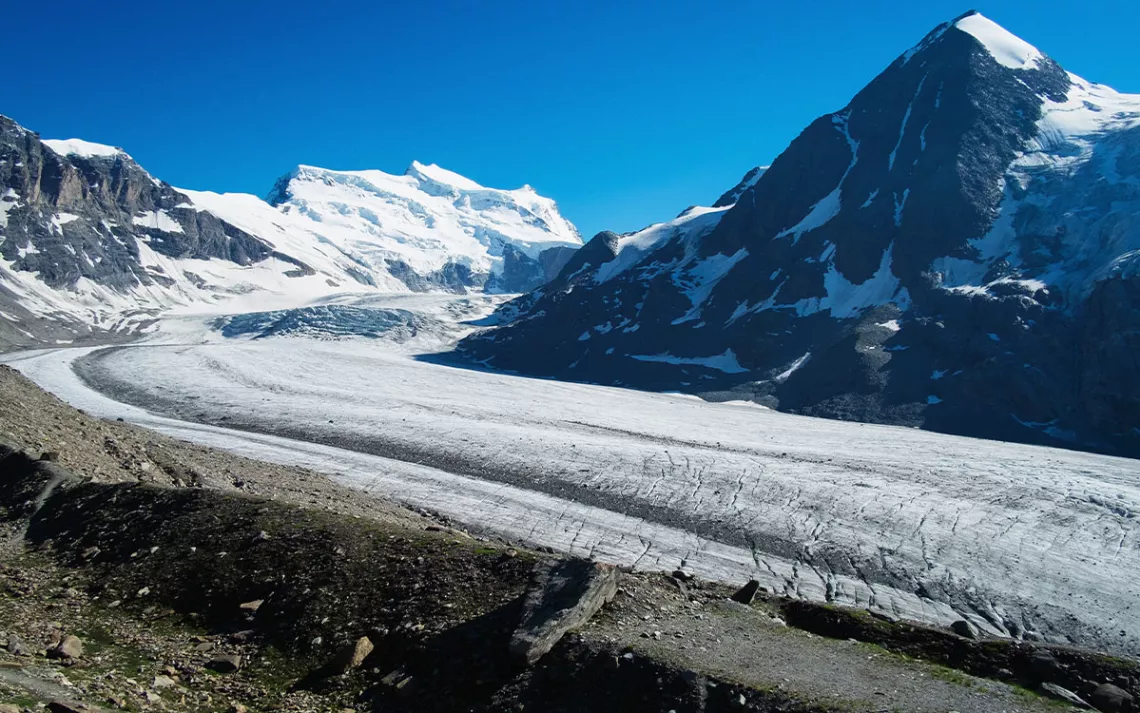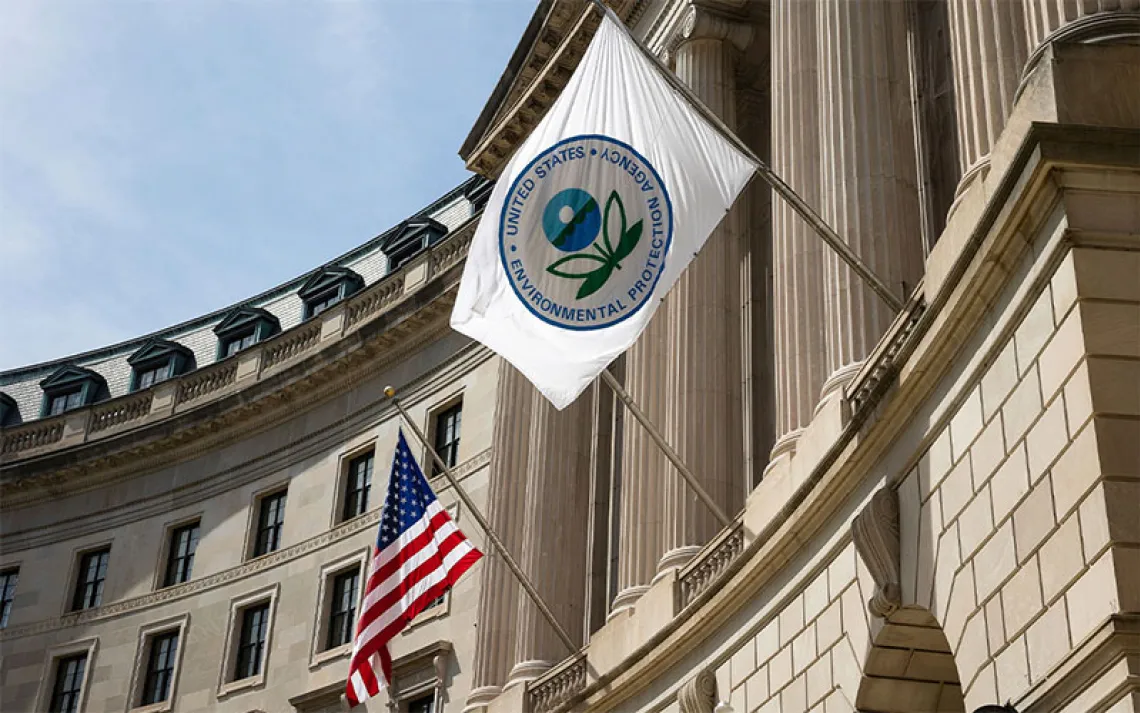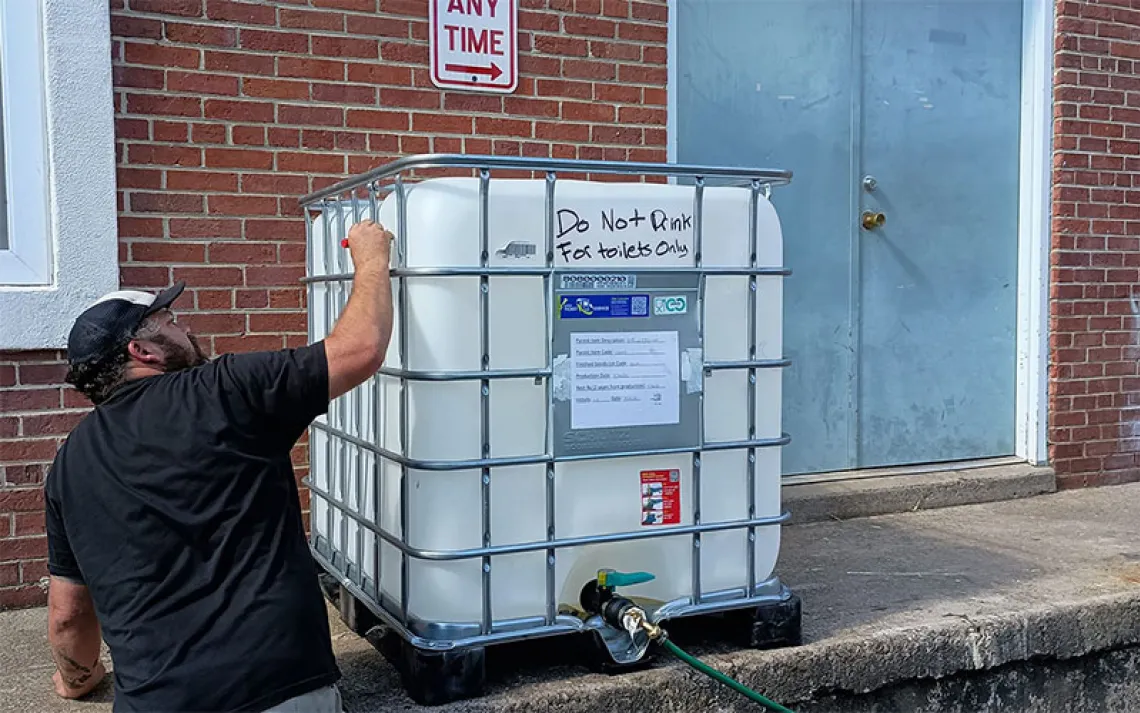Researchers Are Losing Data Because of Climate Change
The Isle Royale Wolf Project and glacier studies are among the projects that have been hampered by a warming world

The Corbassière Glacier in Switzerland. | Photo by zulufriend/iStock
For the past 65 years, researchers have conducted an annual survey of moose and wolves on the shores of Michigan’s Isle Royale National Park, a 132,018-acre island on the north side of Lake Superior. During the annual seven-week field season, which starts in January, biologists fly around during the day, counting animals from the air to understand the unique dynamics of predator and prey. At night, the researchers usually leave their seaplane on the frozen lake, but this past season was different.
The ice was nine inches thick when it should have been 10 to 20 inches thick. Then it was seven inches thick, the outside temperature 20 degrees warmer than the average high of around 20°F during the day. The team kept checking the weather forecast, but the temperature never dipped below freezing. Holes formed in the ice. Two weeks in, the researchers decided it wasn’t safe to keep the plane on the lake, so they cut the survey short.
For Sarah Hoy, one of the project leads from Michigan Tech, the experience was disappointing. “We start preparing for the winter field season in September and October,” she said. “It's expensive to get out to the island, and it takes a couple of days to get everything set up. And then you have to undo everything.”
The Isle Royale survey is just one example of an increasing number of scientific studies either hampered or ruined altogether due to a warming world. From research projects that document icy conditions on land to those focused on hot oceans, studies are increasingly threatened by the effects of a climate change. The consequences could mean losing crucial data the researchers use to determine how carbon and methane gas affect the world around us.
“In most places, nobody will know what was there before unless some scientists were taking pictures and measuring what it used to be like,” said John Bruno, a marine ecologist at the University of North Carolina at Chapel Hill who studies climate and coral. “I feel like a war correspondent just recording history. We all kick ourselves, [asking] why weren't we describing things better in the '70s and '80s?”
People across the globe are already seeing the effects of climate change: stronger storms, more frequent and severe droughts, and, of course, warmer temperatures. Since the dawn of the Industrial Revolution around 1880, humans have been pumping greenhouse gases into the atmosphere, raising average global temperatures—the combined air temperature over land and water at the ocean’s surface—roughly 1.1°C. That number will continue to rise until we end the use of fossil fuels, and even long after. Sea-surface temperatures are also ticking up even faster. The Woods Hole Oceanographic Institution estimates that sea-surface ocean temperatures, or the top 2,300 feet of the ocean, are 2.7°F (1.5°C) warmer than they were in the early 1900s.
Scientists predict that when the average global temperature climbs 1.5°C above pre-industrial levels, we will start to see even more profound effects. More sea ice and glaciers will melt, oceans will acidify further, and some organisms that thrived in cooler climes will struggle. Accessing places that depend on certain conditions will also become more difficult, as was the case this winter on Isle Royale.
Melting data preserved in ice
In lieu of documentation, one of the best ways to look into the past and better understand how climate has changed is to drill deep into glaciers and ice caps and pull out intact ice cores. The layers of ice correspond to years and seasons. The gases trapped within them give researchers insight into the atmosphere’s carbon dioxide, sulfate, and heavy metal concentrations at different points in Earth’s history. Knowing more about the concentrations of those particles in the ice cores could help paint a more detailed picture of the future. When ice melts, however, information that helps scientists piece the climate puzzle together washes away.
Researchers who drilled ice cores in Switzerland’s Corbassière Glacier announced in January that they could no longer get climate information from the ice. In a paper published in Nature Geoscience that month, chemists and glaciologists detailed how the natural archive was unsuitable for measuring aerosols due to rapidly melting ice near the glacier’s surface.
The study was part of the Ice Memory Initiative, an effort to collect ice cores from six expeditions around the world and preserve the cores in a snow cave in Antarctica. Researchers went to the Swiss glacier to take samples in 2018 and then again 2020. The second time, they noticed that the ice was soft and difficult to drill into. Still, they held out hope that the sample they collected would contain the data they wanted. But when they analyzed the core, the layers didn’t correspond with other samples, indicating it was unsuitable to use for air pollution records.

Sign up to receive Sierra News & Views
Get articles like this one sent directly to your inbox weekly.
With this action you affirm you want to receive Sierra Club communications and may vote on policy designated by the Sierra Club Board.
The aerosol particles they study, considered air pollution, scatter light and form clouds. Yet unlike greenhouse gases, they are not evenly distributed throughout the atmosphere, so it’s more difficult to incorporate them into climate models and figure out how they influence climate.
Without data from the glacier, said Margit Schwikowski, a chemist at the Paul Scherrer Institute in Switzerland who coauthored the paper, “we lose this information about past air pollution, past climate, and past environmental conditions in this region.”
Vanishing sea life in warming waters
On the other side of the world, warming is having an impact on ocean environments in much the same way. Climate models predicted that sea-surface temperatures would rise as greenhouse gas concentrations went up, and recent volcanic eruptions that contained fewer planet-cooling aerosols paired with shipping fuel rules meant to curb aerosol pollution have likely pushed temperatures higher even faster than scientists expected. A consequence of that is more coral bleaching and less seaweed off the Galápagos Islands, where UNC’s John Bruno is overseeing a research project.
“You can go to a reef, many reefs, and see what used to live there, even if it died 10 or 20 years ago,” he said. What you cannot see is the dead crabs, worms, sponges, and seaweed, organisms that contribute to a reef’s biodiversity. “We're doing a lot of work measuring their thermal tolerance,” said Bruno. What the researchers find will give them a better sense of whether other organisms are as sensitive to warming as the corals.
So far, he and graduate students have found that the seaweeds are very tolerant of high temperatures, but photosynthesis peaks and then shuts down. To determine photosynthesis rates, the researchers dive to seaweed-covered rocks and use an iPad loaded with software to record the data. Only this year, when the water was nearly 85°F, Bruno’s graduate student dove to take her measurements and found there was no seaweed on the rocks at all.
Though the loss of data, and in some cases the subject, can prove frustrating to researchers who invest time and money in their projects, it can also be important to document the absence of something that was once there, as Schwikowski did in her paper and Bruno’s graduate student will do in her thesis. That can help inform what we know about the surrounding ecosystems and the conditions that led to our current circumstances, said Bruno.
“I think it's valuable,” Bruno said. “She's actually measuring this thing that we kind of know happens, but there's very little data showing that.”
 The Magazine of The Sierra Club
The Magazine of The Sierra Club



